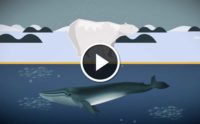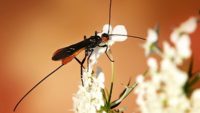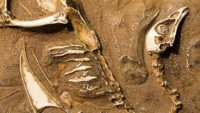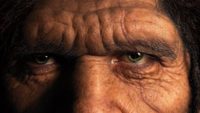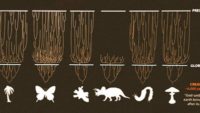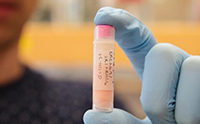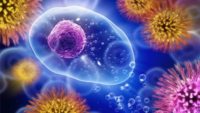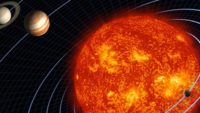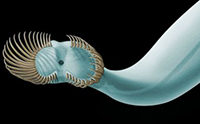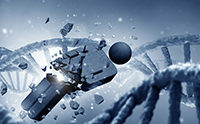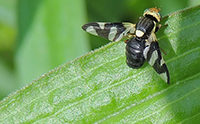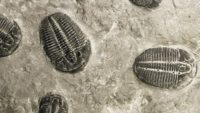In 1859, Darwin speculated that bears evolved into whales. But does this story hold water? More… …read more Source: icr.org
By Dr. Elizabeth Mitchell Many parasitoid wasps optimize the reception for their larvae by injecting venom that disables the host insect’s immune system or changes its behavior. …read more Source: AIG Daily
Fossils act as a record preserved to teach us about the earth’s past, to confirm Scripture, and to glorify God. …read more Source: AIG Daily
Trilobites were fascinating invertebrates that inhabited pre-Flood ocean bottoms. They were fossilized when “primitive” life supposedly was just getting started, but the complexity of these animals is unparalleled. New trilobite anatomical discoveries contradict previous evolutionary beliefs about their digestive systems. More… …read more Source: icr.org
Uniformitarian scientists cannot explain how planation surfaces exist throughout the world, but the evidence clearly points to the biblical Flood. …read more Source: creation.com
By Dr. Elizabeth Mitchell Scientists report the biochemical footprint of a particular sugar polymer—a type that modern humans cannot make—has been found in an ancient African fossil. …read more Source: AIG Daily
By Dr. David Menton Evolutionists seek to explain the origin of species from a single, hypothetical, primordial life-form by means of progressive change and natural selection. …read more Source: AIG Daily
Recently, secular scientists revealed their speculation of alternate evolutionary histories by studying a protein they supposed existed half a billion years ago. Using a large “set of genetic variants” from “a resurrected version of an ancient protein” they theoretically discovered “a myriad of other ways that evolution could have” occurred. Are they on to something valid or is this another unsupported speculation? More… …read more Source: icr.org
By Dr. Andrew Fabich Viruses are amazingly complex and beautiful machines. They exhibit all the hallmarks of being designed, though we often fail to recognize them as such. …read more Source: AIG Daily
Human designers of TV screen copy one of the ways cuttlefish change colour. …read more Source: creation.com
When it’s a gigantic underwater landslide formed during Noah’s Flood. …read more Source: creation.com
By Dr. Danny R. Faulkner With yet another set of failed predictions, shouldn’t all this nonsense about Nibiru finally go away? It should, but it probably won’t. …read more Source: AIG Daily
Paleontologists have unearthed yet another bizarre creature, this time in British Columbia, Canada, from sediments alleged to be 541 million years old. Evolutionists feel this new genus of animal is an evolutionary ancestor that led to modern arrow worms that currently inhabit the world’s oceans. But is it? More… …read more Source: icr.org
By Ken Ham Last month, AiG’s Director of Research Dr. Andrew Snelling launched a momentous raft trip on the Colorado River through the Grand Canyon to collect rock samples from four specific sites. This trip came on the heels of an almost four-year battle with the National Park Service, which included a lawsuit filed with the help of Alliance Defending Freedom (ADF). The team of seven, including Dr. John Whitmore, senior professor of geology at Cedarville University, spent a week inside this magnificent Arizona canyon collecting samples. <img src="https://assets.answersingenesis.org/img/blogs/ken-ham/2017/09/andrew-snelling-and-john-whitmore.jpg" alt="Drs. Andrew Snelling and John …read more Source: Ken Ham AIG [More]
By Harry Dickens North America’s Proterozoic geology provides evidence for enormous erosion and the formation of extensive water flow systems, even spanning the continent. …read more Source: AIG Daily
The recent publication of a research paper evoked such headlines as “Massive genetic study shows how humans are evolving.” Despite the improvement of health-care technology, many other studies indicate that chronic human disease is increasing worldwide—and that mutations are commonly associated with disease, not upward evolutionary improvement. More… …read more Source: icr.org
The controversial theory with a long history of competing concepts that is no closer to being resolved than it was in Darwin’s day. …read more Source: creation.com
Does the reverse ontological argument show that God can’t exist? …read more Source: creation.com
It’s claimed to be ‘evolutionary art’, but evolution has no plausible explanation for incredible images on the wings of a remarkable fly. …read more Source: creation.com
Recent studies describing sophisticated plant traits, and some of the insects that feed on those plants, highlight how biology may be interpreted very differently. But usually, these interpretations are largely dependent on a researcher’s preexisting beliefs about the origins of living things. More… …read more Source: icr.org
When the numbers don’t add up, it’s time to examine the methods and the philosophy behind them. …read more Source: creation.com
By Dr. Danny R. Faulkner The best stellar evolution models fix HD 140283’s age to slightly older than the big bang model age for the universe. …read more Source: AIG Daily
Evolutionists try to define homology by how it is explained, not by how it is observed. …read more Source: creation.com
By Dr. Danny R. Faulkner The winter solstice has a special effect at Ireland’s most famous megalith. …read more Source: AIG Daily
By Dr. David Menton Selected data and unprovable assumptions are a problem with all methods for determining the age of the earth, as well as for dating its fossils and rocks. …read more Source: AIG Daily
By Jonathan Bartlett After examining the present and future state of cosmology, Krauss and Scherrer conclude that we live in a very special time in the universe. …read more Source: AIG Daily
Everyone knows that spiders spin webs but did you know they also use their silk to move through the air? …read more Source: creation.com





















